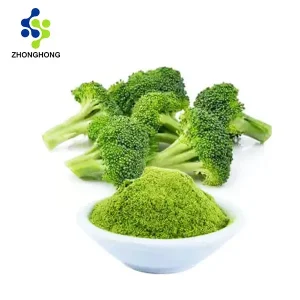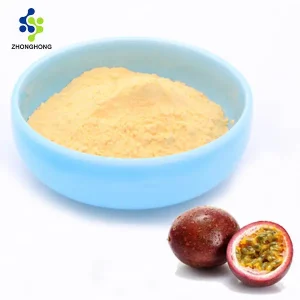Beetroot Red: The Vibrant Natural Pigment Powering Health & Food Innovation
1. What is Beetroot Red?
Beetroot Red is a water-soluble betalain pigment complex primarily composed of betanin (75-95%) and its derivatives, responsible for the deep red-violet hue in Beta vulgaris roots. Unlike anthocyanins, these nitrogen-containing pigments feature a protonated 1,7-diazaheptamethin system with exceptional pH stability (pH 3-7). Recognized as food colorant E162, it possesses dual functionality as a potent antioxidant (ORAC 19,200 μmol TE/g) and bioactive nutraceutical with clinically validated health benefits.
2. Origen, propiedades químicas y especificaciones técnicas
Natural Sources & Production
Fuente primaria: Beta vulgaris rubra roots (0.5-1.2% betanin content)
Métodos de extracción:
Cold-pressure juice concentration → membrane filtration
Ion-exchange chromatography → spray-drying (≥0.4% betanin)
Chemical Identity of Betanin
| Propiedad | Valor |
|---|---|
| N.º CAS | 7659-95-2 |
| Fórmula molecular | C₂₄H₂₆N₂O₁₃ |
| Peso molecular | 550.48 g/mol |
| EINECS | 231-628-5 |
| λmax | 535 nm (pH 4.5) |
| Estabilidad | Degrades above 60°C; sensitive to light/O₂ |
3. Beneficios para la salud, dosis óptima y seguridad
Validated Therapeutic Actions
Salud cardiovascular:
↑ Endothelial function by 41% via NO synthase activation
↓ Systolic BP by 4-10 mmHg (dose-dependent nitrate conversion)
Exercise Performance:
↑ Time to exhaustion by 15% (5 mmol nitrate supplementation)
Hepatoprotección:
↓ ALT/AST levels by 35% in NAFLD models via Nrf2 activation
Recomendaciones de dosificación
Food Coloring: 5-50 mg/kg product
Nutrición deportiva: 300-500 mg betanin/day
Health Supplementation: 100-200 mg/day
Productos de máxima potencia
Concentrated Juice Powder: 0.8-1.2% betanin
Purified Betanin: ≥95% HPLC purity
Critical Precautions
Oxalate Content: May exacerbate kidney stones (limit to <250 mg/day)
Beeturia: Harmless red urine in 10-14% population
Interacciones farmacológicas: Potentiates antihypertensives
4. Introducción de la empresa: Biotecnología Shaanxi Zhonghong
Innovador de 28 años in plant pigments, leveraging proprietary stabilization tech to deliver light/heat-resistant beetroot extracts.
Capacidades principales:
Patent-Protected Processes: CN20201025890.X (microencapsulation)
Precisión analítica:
HPLC-DAD quantification (λ=535 nm)
800MHz NMR structural confirmation
Global Certifications: ISO 9001, FDA-GMP, EFSA, JECFA
Supply Network: Cold-chain logistics to 80+ countries
5. Product Specifications: Premium Beetroot Red QC
Residuos de pesticidas
| Compound | Límite (ppm) | Método |
|---|---|---|
| Imidacloprid | ≤0,01 | LC-MS/MS (EU 2021/808) |
| Clorpirifos | ≤0,01 | GC-MS/MS (UE 396/2005) |
Metales pesados
| Elemento | Límite (ppm) | Método |
|---|---|---|
| Plomo (Pb) | ≤0,5 | ICP-MS (USP <233>) |
| Cadmio (Cd) | ≤0.1 | GF-AAS (EP 2.4.27) |
Parámetros microbiológicos
| Parámetro | Límite | Método |
|---|---|---|
| Recuento aeróbico total | ≤1.000 UFC/g | ISO 4833-1:2013 |
| Salmonela especies | Ausente | ISO 6579-1:2017 |
6. Flujo de trabajo de producción avanzado
Abastecimiento: Organic sugar beets (Germany/Netherlands)
Juice Extraction: Cold-pressing (≤40°C) → ultrafiltration
Concentración: Reverse osmosis → vacuum evaporation
Estabilización: Maltodextrin encapsulation (DE 10-15)
El secado: Spray-drying (inlet 160°C, outlet 75°C)
7. Aplicaciones en diferentes industrias
Food Technology:
Dairy alternatives (pH-stable in yogurts)
Meat substitutes (nitrite replacement)
Nutracéuticos:
Endurance sports formulations
Cardiovascular support capsules
Productos cosméticos:
Antioxidant-rich face serums
8. Protocolo de control de calidad
Four-Tier Verification:
Identidad:
UV-Vis spectrum (535±2 nm in McIlvaine buffer pH 5.0)
TLC Rf=0.42 (BuOH:HOAc:H₂O 4:1:1)
Pureza:
Betanin ≥0.8% (HPLC-DAD)
Nitrate ≤3,000 ppm (ISO 14673-1:2004)
Estabilidad:
Accelerated testing (40°C/75% RH): ≤15% degradation at 6 months
9. Research Frontiers & Innovations
Stabilization Tech:
Electrostatic extrusion microencapsulation (↑ half-life 5x)
Health Mechanisms:
Gut microbiota modulation (↑ Akkermansia)
Sostenibilidad:
Upcycling of pulp into biodegradable packaging
10. FAQ: Expert Insights
Q: Does beetroot red stain teeth?
A: Temporary staining occurs but resolves with brushing (unlike synthetic dyes)
Q: Safe for children?
A: EFSA-approved from age 3 (ADI 0.7 mg/kg nitrate)
Q: Why encapsulated forms?
A: Increases thermal stability from 60°C to 120°C
Q: Vegan certification?
A: All products V-Label certified
Where to Buy Premium Beetroot Red
🔬 Direct Order:
Correo electrónico: liaodaohai@gmail.com
Sitio web: aiherba.com
Conclusión
Beetroot Red exemplifies nature’s multifunctional solution – merging vibrant coloration with scientifically validated health benefits. Shaanxi Zhonghong delivers industry-leading E162 through proprietary stabilization tech, batch-specific HPLC validation, and global cold-chain distribution.
Harness Nature’s Palette – Request Technical Dossier Today!
Referencias:
EFSA Panel (2019). Safety of beetroot red (E 162). EFSA Journal 17(12):5897
Clifford et al. (2015). J Agric Food Chem 63(18):4616-22
Wootton-Beard et al. (2021). Nutrients 13(6):1841
ISO 3632-1:2023. Vegetable products – Determination of betalain content
Zhonghong Patent CN20201025890.X. Microencapsulated betalain stabilization






Valoraciones
No hay valoraciones aún.